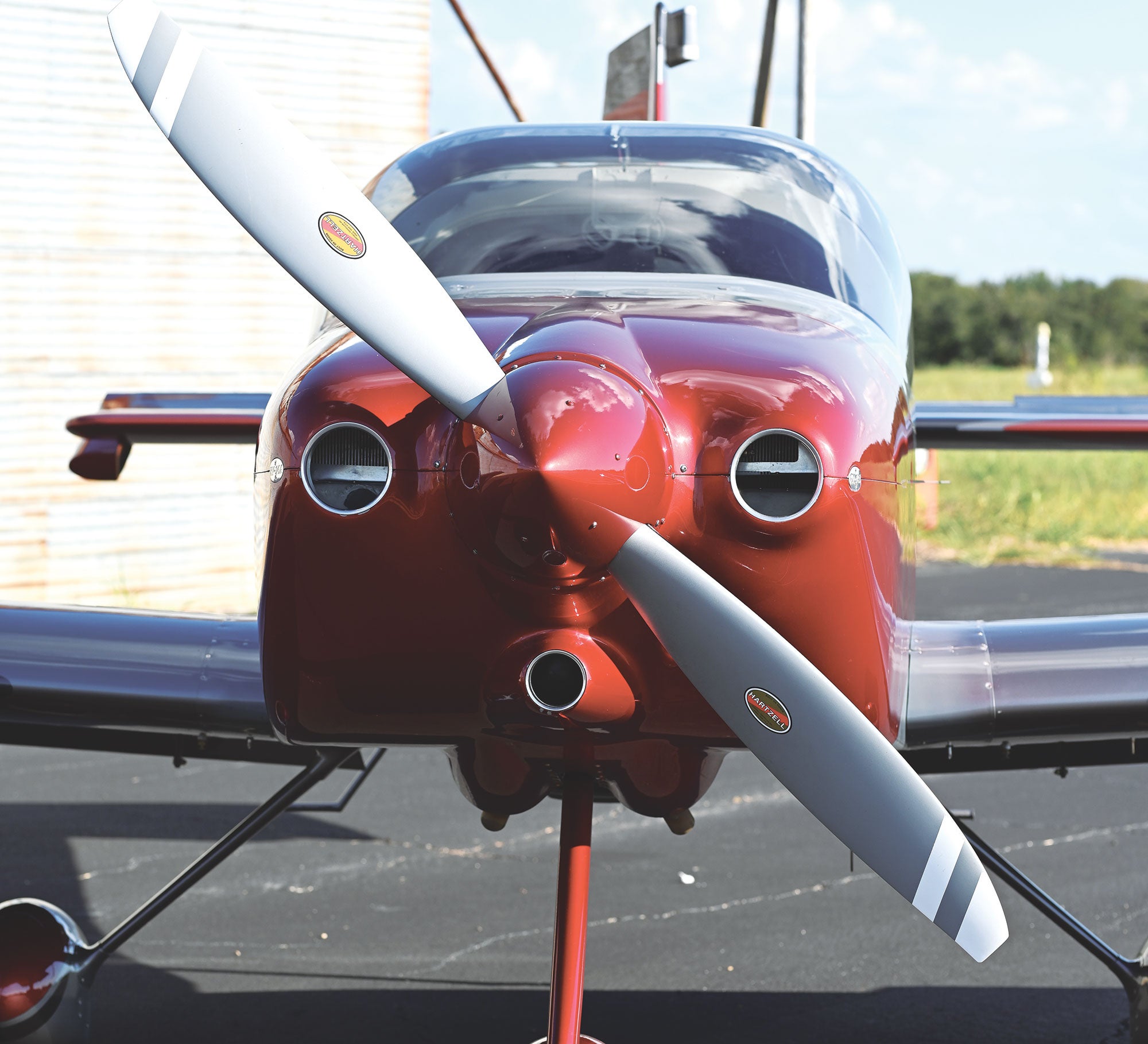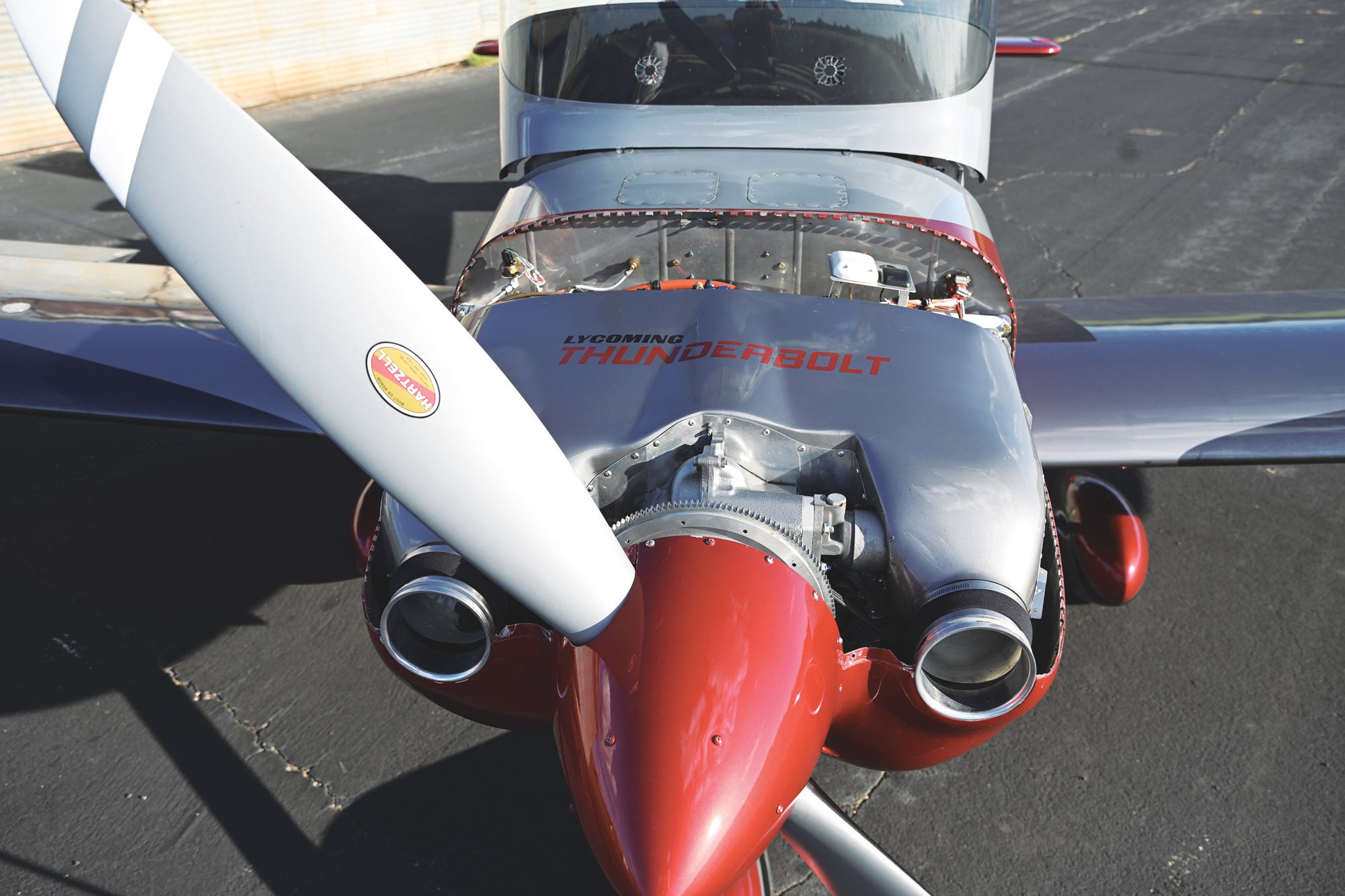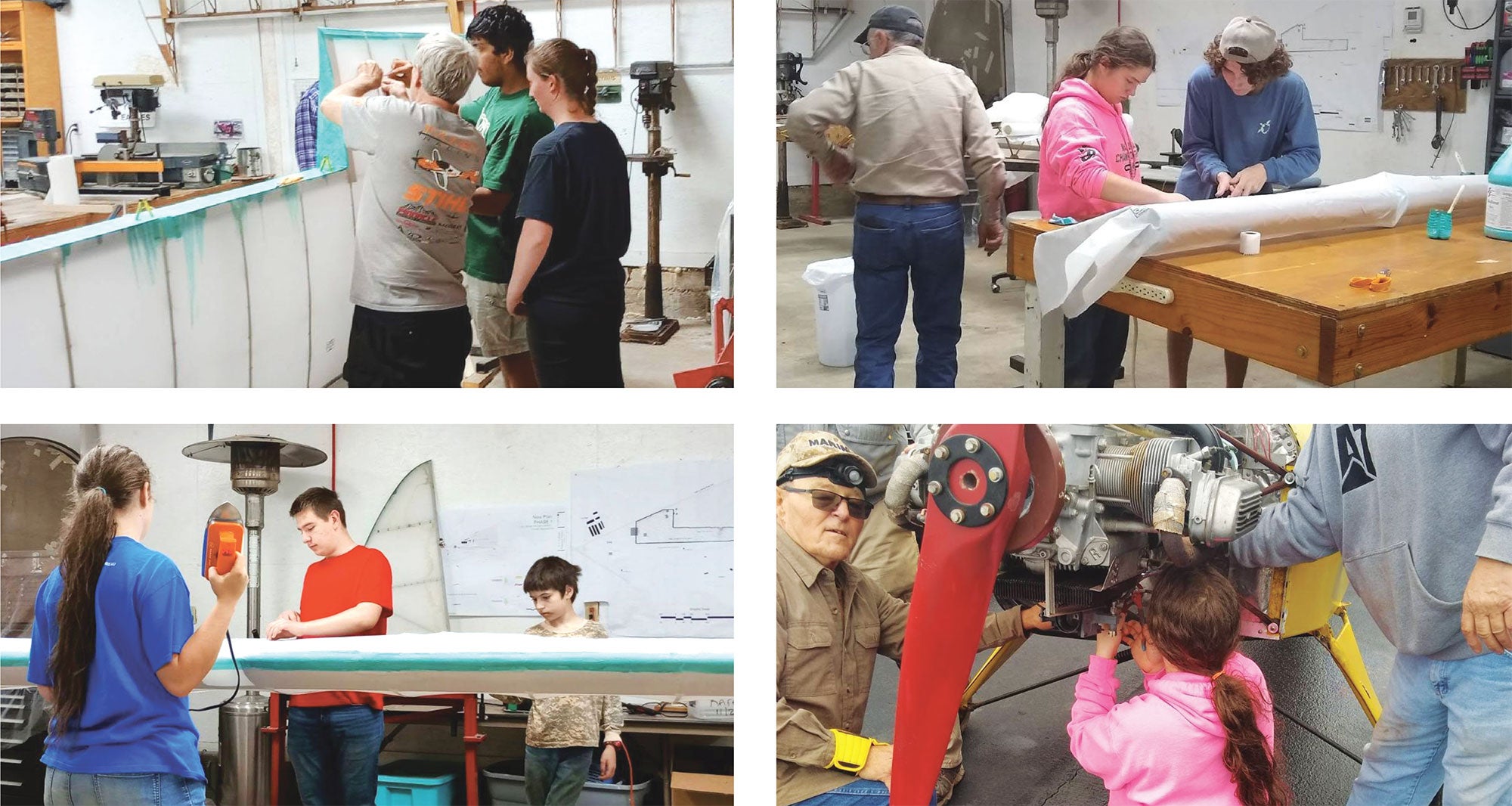
“I helped repair a boat hull when I was in the sixth grade, and that got me hooked on working with fiberglass,” explains new owner Jimmy Cox. “Fiberglass is fun to work with…once you get past the learning curve,” he says with a knowing laugh.
And Cox quickly got past that curve with his first fiberglass company, Extreme Composites, which he began in the late 1990s. His custom hoods for Mustangs, Cadillacs and other vehicles were quickly noted for their styling and finish, and the company’s parts are still in demand today. But Cox, a self-described “airplane nut,” longed to branch into aviation. Reno air racer Mark Frederick gave him that chance. “My first real glass work for planes was for Mark and Team Rocket. We made parts for the F1 Rocket kits he sold and that eventually led to my buying James Aircraft,” he explains. Cox credits Frederick for helping him further hone his glassing skills, and Cox is just as keen to learn today as he was then. “Sam James calls us up from time to time to see if we have questions and he’s been super quick to lend a hand with whatever we’re doing,” he says.

Cox co-owns James Aircraft with his life partner Mona Zimmerman. He handles production, while she concentrates on business operations. With about a third of the kit market taken up by Van’s Aircraft, the couple knows there’s a significant customer base for their products, especially now that Van’s appears to have navigated its way through bankruptcy. James will continue to offer all the RV cowls, plenums, air induction kits and other parts that it made previously but is also expanding into making different types of wheel pants, fairings and other smaller parts. Cox says James Aircraft is the only company making cowls for all the RV models, with just one other competitor making one for the RV-10.
“Not only are our parts better looking than the stock ones, with our plenums and round inlets we reduce drag and improve cooling, which lets RVs go a little faster…always a good thing,” he details.
Cox uses Parabeam fiberglass for most of its parts. “This cloth has a three-dimensional weave that results in a hollow, honeycomb-like core,” explains Cox. “So, combined with the Epon 862 Resin we use, we end up with a lighter and stronger part that’s very resistant to chemicals.” Cox employs carbon fiber for his spinners and plans on using the material in the future to make wheel pants. He’s also expanding into making parts for certified aircraft. “I just made some wheel pants for a Cessna Cardinal and my design gained an extra 8 knots over the stock ones,” he said.
James Aircraft doesn’t provide finished parts. Like the stock offerings from Van’s, the final surface work is left up to the customer. But, Cox says they try very hard to reduce pinholes and provide the best surface possible for finishing. “More and more of our customers want parts as close to finished as possible and we’re doing what we can to get there within the realm of what’s involved in the final assembly process,” says Cox.
Detailed information on all the parts James Aircraft offers can be found on the company’s website which also has helpful tips on what to cut from your order at Van’s if you’re planning on using James’s parts in place of the stock pieces. “We’re normally working three to four weeks out on orders and we try to beat that time. A couple of years ago we had issues getting supplies but we’re past that now and most things we can get quickly.”
Cox says his biggest business challenge is advertising, and he has been spending more and more time at shows trying to get the word out to RV builders. “The kit airplane market seems to be booming, and Oshkosh gets bigger every year,” he says. “I talk myself raw at various events, but I know I can always reach more people. I think MOSAIC is only going to speed things up even more in aviation and I want James Aircraft to be a part of that growth.”
Plenum Matters
A plenum on a piston engine aircraft is an enclosure around the engine that helps air circulate for the purpose of cooling. They are typically made of aluminum or fiberglass and are designed in conjunction with air inlets and baffles to hold the air around the engine at a higher pressure than the surrounding air. This pressure difference allows the air taken in from the inlet(s) in the cowl to move evenly past the engine’s cooling fins at a speed and volume that keeps the engine at an appropriate operating temperature.

- The cowl’s air intake(s) must be sized to allow enough air for sufficient cooling but not so large as to unnecessarily disrupt the airflow over the cowl and increase drag. The overall shape of the inlet can also make a significant difference in drag and the volume of airflow. James Aircraft’s Jimmy Cox uses round inlets that are smaller than the stock RV ones to minimize drag.
- An efficiently designed plenum moves the lowest volume of air possible around the engine for sufficient cooling. Excess air in the plenum can overcool the engine, contribute to drag, escape into the engine compartment and disrupt the flow of air through the cowl. Cox says the cowls on many RVs bulge outward at normal cruising speeds because the design of the stock system allows air to slip out of the plenum.
- Baffles are ridged skirts of aluminum or fiberglass placed in such a way as to guide or block the flow of air through the plenum and cowling. They typically have soft, rubber-like seals to stop air movement where they mate up with the cowling. Their design and placement are key in the balance between the volume of air flowing through the plenum and cowl, the speed at which it’s moving and its temperature. The baffles on the plenums from James Aircraft fasten to the plenum to minimize leaks.
—M.T.
3D Fiberglass
One reason James Aircraft’s cowls are so popular is the company’s use of Parabeam fiberglass. Parabeam invented woven sandwich fiberglass and, in addition to its aviation uses, you can find it in mass transit floors, ceilings and doors, watercraft decks, panels and bulkheads, and in building and architectural elements.

- Unlike conventional cross-weave fiberglass cloth, Parabeam consists of two bidirectionally woven deck layers that are joined vertically with braided pillars. (See illustration.) The pillars act like springs and push the deck layers apart to a predefined height.
- When you apply resin to Parabeam, the pillars’ capillary function saturates the glass yarn without filling the empty space between the deck layers. This avoids wasteful resin oversaturation and creates a permanent hollow space between the layers. (This space can even be filled for insulating purposes.)
- Just as with honeycomb-style construction materials, Parabeam allows you to make lighter parts without sacrificing strength. And, the 3D nature of the weave means rigidity in multiple directions.
- Parabeam drapes well, can easily be pulled into curves and can be squashed or compressed to achieve variable thicknesses.
- The fabric is resistant to decay, fungi, algae, humidity and corrosion, and it can handle common aviation fuels and solvents.
—M.T.
Fun with Fiberglass
If you think building an aircraft is fun, Jimmy Cox says help some teenagers learn to put one together for an even more enjoyable and satisfying experience. “I look forward to every Saturday when I get together with my Rockdale Tiger Flight,” said Cox, the owner of James Aircraft. The group is a 501(c)(3) nonprofit he started about a decade ago to introduce kids to aviation and aircraft construction.

“We’re in a small Texas county of only 25,000 people, so very few of our kids have a chance to learn about planes firsthand,” says Cox. “I started doing this because I read accounts about how much of a difference it can make in a child’s life to give them hands-on opportunities. And, I’ve seen some results with the kids we’ve had. A few have gone on to earn their pilots’ licenses and one became an engineer, in part because of their time with us.”
On any given Saturday you’ll find three to eight junior and senior high school students working on planes at Coffield Regional Airport, a non-towered field a few miles southeast of Rockdale, Texas. The group is presently in the final stages of assembling a Zenith 601 HDS, with only a few small jobs and the panel left to complete. They’re also re-covering the wings on a J-6 Karatoo which, because of its folding wings, Cox plans to trailer to area schools to help recruit new members to the group. As soon as these aircraft are finished, they’ll start on one of several other planes around the field that are in various states of airworthiness. One of these aircraft is a NE-1 Piper J-3 warbird, one of only 220 made for the U.S. Navy.
Cox is trying to arrange an agreement with the local school district to formalize educational credit for his kids. He believes this should drive up membership as it increases the value of their participation. “The kids usually stay for a few years before moving on, so we’re always recruiting,” Cox explains. “Parents play a big role in getting the kids involved, and not just with transportation to the airport. Some parents get right in there with their child to help build…so their enthusiasm for the work makes a difference,” Cox says.
Cox is also on the lookout for volunteers and donations. He and his partner at James Aircraft, Mona Zimmerman, have put well over $20,000 of their own money into the group. A local A&P, Doug Scott, volunteers his time to help guide the build and handle official sign-offs, but more assistance would be nice. With Samsung building a production plant nearby within the next few years and people moving to the area to work in the plant, Cox believes he’ll need more help as there will be more kids in the area to recruit. If you’d like to make a tax-deductible donation to help the group grow, a check can be sent to: Rockdale Tiger Flight, 985 West US Highway 79, Rockdale, TX 76567.
—M.T.
Photos: Courtesy of James Aircraft, Cheryl Schneider.














